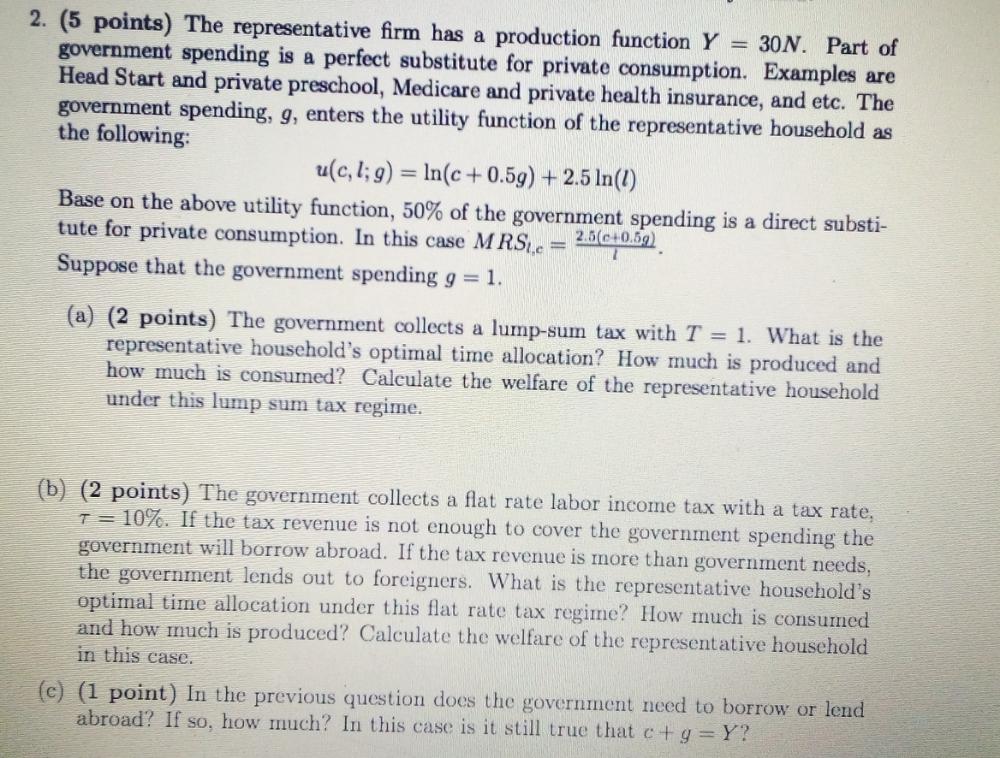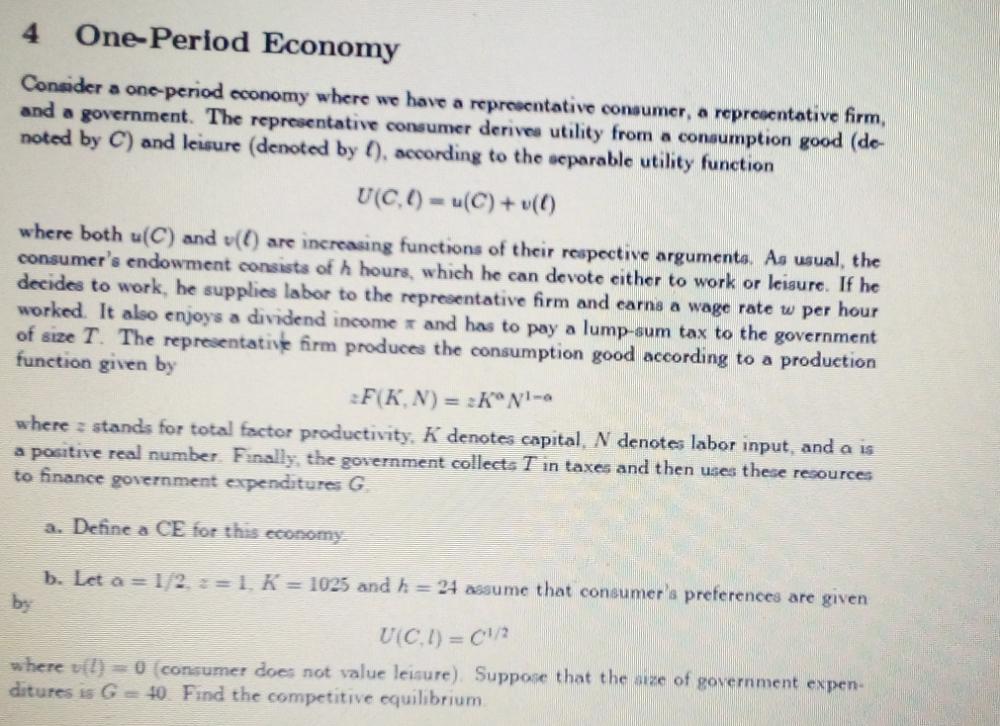



A.nswer in completeness.
2. (5 points) The representative firm has a production function Y = 30N. Part of government spending is a perfect substitute for private consumption. Examples are Head Start and private preschool, Medicare and private health insurance, and etc. The government spending, g, enters the utility function of the representative household as the following: u(c, 1; g) = In(c + 0.5g) + 2.5 In(1) Base on the above utility function, 50% of the government spending is a direct substi tute for private consumption. In this case MRS . _ 25(C+0.59) Suppose that the government spending g = 1. (a) (2 points) The government collects a lump-sum tax with T = 1. What is the representative household's optimal time allocation? How much is produced and how much is consumed? Calculate the welfare of the representative household under this lump sum tax regime. (b) (2 points) The government collects a flat rate labor income tax with a tax rate, T = 10%. If the tax revenue is not enough to cover the government spending the government will borrow abroad. If the tax revenue is more than government needs, the government lends out to foreigners. What is the representative household's optimal time allocation under this flat rate tax regime? How much is consumed and how much is produced? Calculate the welfare of the representative household in this case. (c) (1 point) In the previous question does the government need to borrow or lend abroad? If so, how much? In this case is it still true that c + g = Y?4 One-Period Economy Consider a one-period economy where we have a representative consumer, a representative firm, and a government. The representative consumer derives utility from a consumption good (de- noted by C) and leisure (denoted by (), according to the separable utility function U(C. 1) = u( C ) + u(!) where both u(C) and v(() are increasing functions of their respective arguments. As usual, the consumer's endowment consists of h hours, which he can devote either to work or leisure. If he decides to work, he supplies labor to the representative firm and earns a wage rate w per hour worked. It also enjoys a dividend income * and has to pay a lump sum tax to the government of size T. The representative firm produces the consumption good according to a production function given by * F (K, N ) = > KON- where = stands for total factor productivity, h denotes capital, /V denotes labor input, and a is a positive real number. Finally, the government collects T in taxes and then uses these resources to finance government expenditures G a. Define a CE for this economy b. Let a = 1/2, a = 1, K = 1025 and h = 24 assume that consumer's preferences are given by U(C.D) = CM/2 where v(!) = 0 ( consumer does not value leisure). Suppose that the size of government expen- ditures is G - 40 Find the competitive equilibrium12 b The representative firm has production function Y = zN, where z is labor productivity. The representative household has utility function u(c, 1) = vc + 18VI. Let w denote the real wage rate. Suppose that z = 200. What is the representative firm's labor demand function? What must the wage rate be at the equilibrium? At this wage rate, how much profit can this firm send to household? Given this wage rate and non-wage income, what is the optimal time allocation and consumption for the representative household? (c) (1 point) At the equilibrium, how big is labor input and how much output is produced? Now the productivity drops. z = 190. At the new equilibrium how big is labor input and how much output is produced?1. A firm produces output with two factors of production, capital (A") and labor (_), according to the following production function AL Y (K, L) = 10 Suppose that the rental rate of capital is $100 and the wage rate is $10. a. Derive the conditional factor demand equations for K and L. b. Derive the long run total cost function. c. Derive the firm's average cost function. d Derive the firm's marginal cost function. e. Graph both the average cost and marginal cost functions. f. If the firm wants to produce 2 units of output, how many units of A and I should it use? How much will it cost














